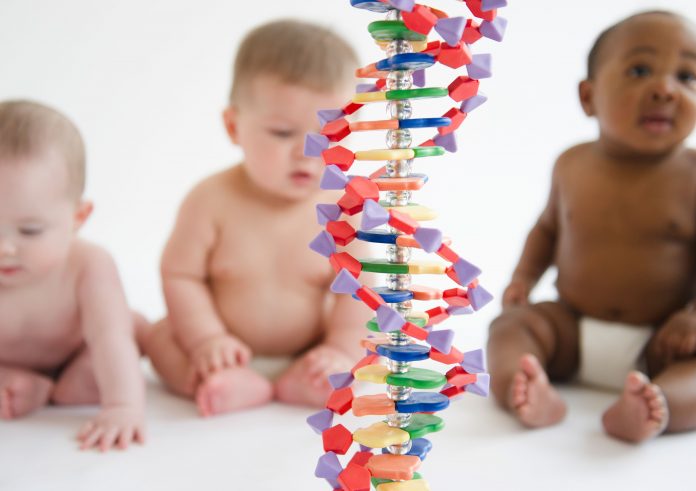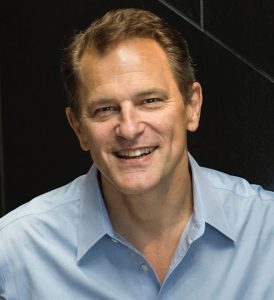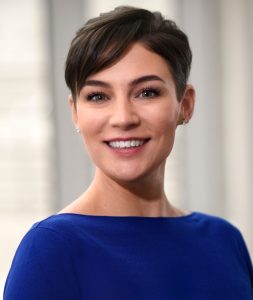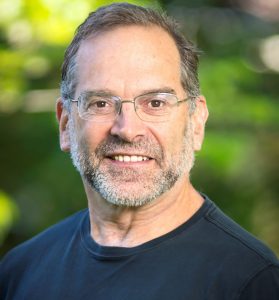
Could exome sequencing (ES) replace the current process of mainly chemistry-based newborn screening? It seems feasible, but a key question is whether genetic screening would cause more anxiety and family disruption, since many detected mutations have uncertain effects.
A new study from the BabySeq project suggests this may not be a significant barrier. BabySeq is a randomized clinical trial designed to examine how best to use genomics in clinical newborn medicine. It was launched in 2015 and involves a range of studies.
“We found no evidence for persistent negative psychosocial effect,” said Alan Beggs, one of the project’s principal investigators and director of The Manton Center for Orphan Disease Research at Children’s Hospital, Boston.
The study also included researchers from Baylor College of Medicine, Harvard Medical School, and Brigham and Women’s Hospital. It was published in JAMA Pediatrics.
This could be a significant step forward for expanding sequencing in newborn medicine. “Whether a parent would be eager to have their and their infants’ genomes sequenced has been a central question since the dawn of genome sequencing,” said John Lantos, M.D., director of Children’s Mercy Bioethics Center at the University of Missouri–Kansas City School of Medicine.

principal investigator, BabySeq
“A huge concern by some was that you would see catastrophic disruption in families. That you would add anxiety, disrupt parent-to-child bonding, and have a deep psychosocial effect by finding genetic mutations that were hard to interpret the effects of, or that might affect other family members as well,” said Robert C. Green, one of the latest study’s authors, a principal investigator of BabySeq, and professor of medicine at Harvard Medical School and medical geneticist at Brigham and Women’s Hospital.
The study enrolled 325 infants and families from well-baby nurseries and newborn intensive care units at academic hospitals in Boston. Half of the newborns were assigned to a control arm and received the standard state-mandated newborn screening along with a family history report. The other half received the same screening and report, plus whole exome sequencing with comprehensive interpretation and return of nearly 1,000 genes.
The sequencing looked for variants related to genetic risk for childhood-onset conditions, as well as a few highly actionable adult-onset conditions. Parental DNA also was sequenced to determine whether variants were inherited.
The researchers focused on the psychosocial effects genetic testing by examining the impact on the parent-child relationship, parent psychological distress and the parents’ relationship with each other. Parents completed surveys measuring those domains for about a year and a half after the children’s birth.
Although minor differences between the study arm and the control arm appeared at different points, the results did not show meaningful differences in family impact over time, even if the families learned of monogenic disease risk or carrier status. Researchers also found lower self- and partner-blame in the study arm compared to the control, possibly because sequencing information provided some degree of peace of mind

Baylor University
According to the researchers, both parents and doctors seem ready to adopt the new technology with proper support. “These results suggest we may not have to worry too much about the impact of sequencing results on parents and families,” says Stacey Pereira, Ph.D., assistant professor at Baylor and co-first author of the report.
“This question has now been authoritatively answered by studies from both Robert [Green’s] group and ours,” said Stephen Kingsmore, M.D., president and CEO of Rady Children’s Institute for Genomic Medicine, which is one of the leaders in sequencing of critically ill newborns.
Doctors are also in step. “Primary care doctors quickly grew accustomed to incorporating this unfamiliar information in their patient care,” noted Green. “In particular, when doctors can use this information to save a patient’s life, they become fans of the technology.”
Currently, newborn screening relies on mainly metabolic tests of up to 35 conditions. This screening is far from comprehensive: There are more than 6,800 rare genetic diseases. Plus, screening has traditionally focused on “actionable” conditions, and varies from state to state. The question of whether sequencing could replace newborn screening has been much discussed, especially as the number of treatments for rare diseases has skyrocketed over the last decade. Today, there are now more than 300 individual treatments for rare dieseases available.
In part, this discussion is happening because genetic sequencing for sick newborns is gaining momentum. The main controversy there seems to be the cost, at around $1,000. “In critically ill babies, sequencing is ready for prime time, what we need is reimbursement,” says Kingsmore.
And there are other signs the “sequencing genie” is ready to come out of the bottle.
“All parents should have the information they want about their children at birth,” said Sharon Terry, CEO of the Genetic Alliance and a member of the BabySeq advisory board. Terry’s two children were born with a genetic disease that took years to diagnose. “If I’d known about my kids’ condition at birth, I would have started working on it years earlier,” she says. Instead she wasted precious time just getting them a diagnosis. Parents, she added, are eager to avoid this “diagnostic odyssey.”
But big hurdles remain.
“I don’t think we are close to NGS replacing newborn screening yet,” said Green. “Right now they find different things.” Another recent BabySeq project published earlier this year in Genetics in Medicine found that, currently, NBS and exome sequencing are complimentary rather than redundant.

University of Missouri–Kansas City School of Medicine
Lantos added that the BabySeq studies employ detailed informed consent. “That’s not how newborn screening is done,” he said. “It’s automatically carried out in the hospital after a birth.” With informed consent, he points out, some parents may be opting out, a choice they won’t have in the hospital.
Like others, Green also emphasizes that the testing must be studied in different populations. This latest BabySeq study involved mainly families with above average education levels who had access to sophisticated healthcare services, including genetic counseling.
With this in mind, BabySeq 2 is on the way, and it is focused on enrolling a more diverse population—500 babies in Boston, New York City, and Birmingham, AL. The website states that “We will work with community members as partners throughout every step of the study to earn trust of potential participants, especially new parents who identify as Black/African American and/or Hispanic/Latinx… We will also interview parents at each site (in English or Spanish) regarding their perspectives on genomic research.”
“It is very important that we make sure to study these issues in a diverse population,” said Pereira. The researchers would also like to follow families for a longer period of time.
Terry sees this as a phase. More knowledge, she points out, is also more power. “Twenty years from now we will say that this is a silly question, and everyone should be screened for things such as hemochromatosis and risk of colon cancer at birth,” she added.
Beggs sees another hurdle, which is economic access. “If it does become widely available, I hope it’s not just for the wealthy,” he said. “If it saves lives and money, it should be for everyone.”











